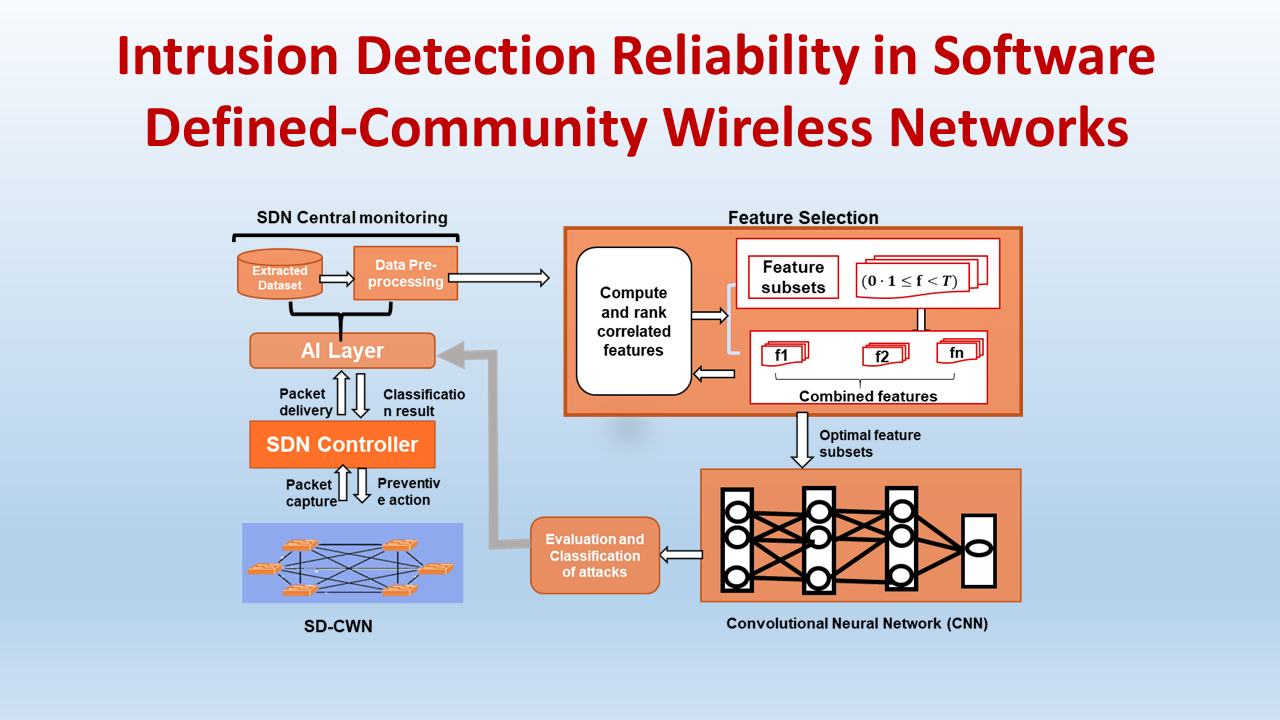
Abstract
Community Wireless Networks (CWNs) offer cost-effective internet access to remote and underserved regions where traditional Internet Service Providers (ISPs) are unwilling or unable to operate. These networks, typically built with low-grade hardware and limited administration, are prone to security vulnerabilities that compromise availability and reliability. Their resource constraints also hinder the deployment of conventional, computation-intensive Intrusion Detection Systems (IDSs). Previous IDS designs for CWNs have seen limited success due to reliance on theoretical vulnerabilities rather than empirical traffic analysis. This study investigates real network traffic from CWNs to understand intrusion patterns and propose a lightweight IDS tailored for such low-resource environments. The proposed solution leverages Software-Defined Networking (SDN) for efficient monitoring and data collection and employs a Filter-based Correlation Feature Selection (CFS) Machine Learning (ML) algorithm to reduce high-dimensional datasets. Additionally, clustering and concatenation techniques are used to combine low-correlated feature subsets, further optimising the classification performance of the ML-IDS model
Gallery 1
Explore the visual story of this exhibit

Title Image